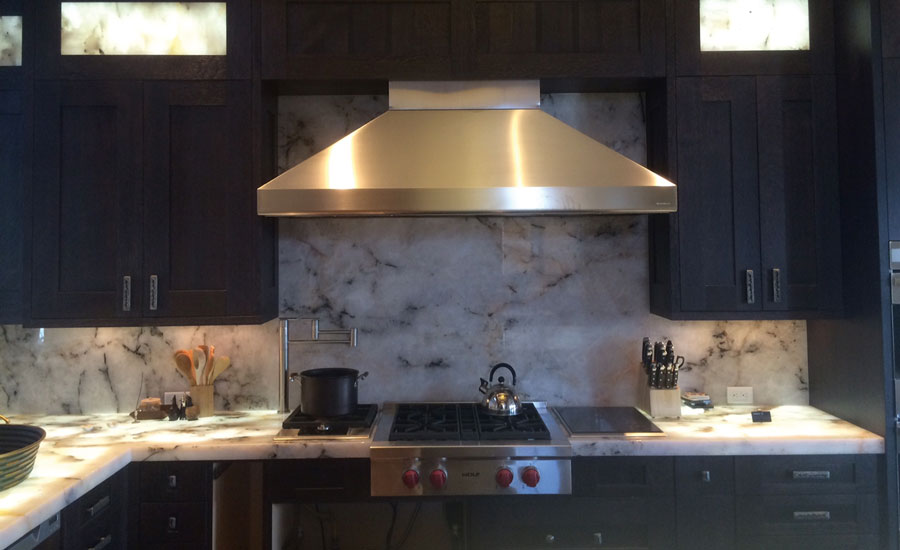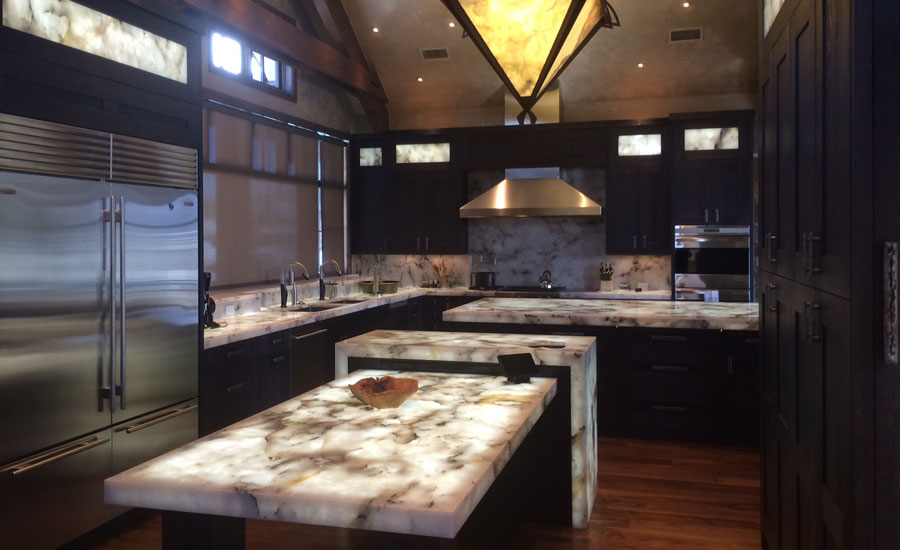Bruce Fraser, owner of Fraser Construction LLC in Avon, Colorado, recently discovered you can have a suitably sized kitchen exhaust system and meet the IRC M1503.4 makeup air requirement without breaking the bank.
This epiphany came as a result of a major kitchen addition/renovation that he completed at a home just west of Vail, Colorado, in the upscale community of Cordillera. The kitchen already had a high-end, 1,200-cfm exhaust hood that would assimilate nicely into the renovation, but the building inspector brought forth some bad news. The home did not meet the newly adopted IRC M1503.4 code, which states: “Exhaust hood systems capable of exhausting in excess of 400 cubic feet per minute (0.19 m3/s) shall be provided with makeup air at a rate approximately equal to the exhaust air rate. Such makeup air systems shall be equipped with a means of closure and shall be automatically controlled to start and operate simultaneously with the exhaust system.”
In 2012, the code became mandatory in Eagle County, Colorado, several years after the Cordillera home was built. Since that time, homebuilders in this and other areas of the country where the code has been adopted have struggled to meet the requirement without imposing intolerable expenses on homeowners.
“When the client doesn’t want to pay the cost [of mechanical makeup air], we usually just install a fan hood rated at 399 cfm,” said Fraser.
It’s an imperfect solution, at best, since many of the homes Fraser builds and renovates are in excess of 5,000 square feet with large, commercial ovens. But, while the code has challenged builders like Fraser, it is rooted in safety. Since modern homes are built with far less air leakage than those built years ago, the operation of a high-cfm exhaust hood can cause a negative pressure inside the home. This places the home at risk of back-drafting from fuel-burning appliances, which can lead to unsafe levels of carbon monoxide inside the home. Still, this level of mechanical intervention is a costly requirement for builders (and homeowners).
A REAL SOLUTION
Justin Nielsen, owner of Skyline Mechanical in Gypsum, Colorado — the contractor hired to complete the mechanical side of the renovation to the Cordillera home — has also found IRC M1503.4 difficult to meet. According to Nielsen, homeowners have typically opted to downsize the kitchen exhaust hood rather than provide a means for makeup air.
“Before this new code, it was difficult to even find a kitchen hood that was under 400 cfm. Now, manufacturers are specifically making 399-cfm hoods just so builders can meet this code,” said Nielsen.
The Cordillera home, however, triggered a recent memory of Nielsen’s. He recalled hearing about a new exhaust makeup air solution from Fantech that included an electric coil for makeup air reheat. The reheat coil tempers the incoming makeup air to offset the heat loss from the exhausted air. Upon further investigation, Nielson learned the Fantech makeup air system also included all of the necessary components, including a control system, to meet M1503.4 in one easily applied package.
A RADIANT RETROFIT
It was the perfect solution in this home, which, like so many Colorado homes, features radiant floor heating. Without a makeup air solution that included integral reheat, Nielsen would have had to install separate hot water coils for reheat of makeup air and tie them into the boiler system.
“At this home, it would have been really expensive to connect the supply and return for the makeup heat back to the boiler plant. We would have had to purchase an additional pump, and getting all that piping through an existing home would have been tough,” said Nielsen.
Fortunately, the Fantech system is completely modular, so it can be ducted together to accommodate just about any space configuration. All of the necessary components are included — the air intake hood, filter, makeup air fan, duct heater, and everything in between. Most importantly, the system includes an easy-to-initiate controller that assures automatic, energy-efficient operation for the homeowner.
HOW IT WORKS
Fantech’s makeup air system goes into action as soon as the kitchen exhaust fan is activated. It’s only energized during periods of kitchen exhaust. The control package includes a transducer that measures the current the exhaust fan is drawing and uses that information to regulate the volume of makeup air. So, no matter how much air the kitchen hood is exhausting, the makeup air system is bringing in the exact amount of fresh air.
This air can be delivered into the kitchen near the exhaust appliance, or it can be ducted into the return air duct of a forced-air/heating system located elsewhere in the home. The inline duct heater and shut-off damper are also controlled by the Fantech control. The heater tempers the makeup air, as needed, during the heating season.
During the setup procedure, the installing contractor follows a few simple steps that teach the control system what current is associated with the minimum and maximum exhaust speed on the kitchen fan. Once the controller has this information, all future operation will be based on some percentage of that range, but always in exact concert with the exhaust fan itself.
This setup provides for a completely balanced air pressure inside the home during operation of the exhaust fan. This is the recommended mode of operation; however, some builders may prefer a slightly positive or slightly negative pressure inside the home — sometimes as a means to minimize migration of moisture through the walls of a home. The Fantech makeup air solution can accommodate these operational preferences, as well.
FLEXIBILITY AND COST SAVINGS
Since the Fantech solution is completely modular, Skyline Mechanical was able to duct the makeup air directly into an air handler that was installed as part of a new air conditioning system, which Skyline also installed.
“The makeup air gets dumped into the central air handler so that it mixes with the conditioned air and gets distributed throughout the main living area of the home,” explained Nielsen.
During winter operation, the heating coil that is part of the makeup air system has the capacity to provide approximately 80 percent of the capacity to preheat the makeup air during design heating conditions in Colorado. Should the outdoor temperature exceed this capacity, there is a backup heating coil in the same air handler.
“The installations went really well. The system cuts down on a lot of wiring and relay installation. We’ll definitely be using this in the future,” said Nielsen.
For Fraser, the Fantech makeup air system alleviated his two greatest concerns: homeowner safety and code compliance. “My greatest concern as a builder was to avoid any potential for carbon monoxide poisoning. And, of course, we have to be able to meet code within the budget constraints of the project.”
For builders like Fraser who will inevitably be faced with the same challenges on future projects, the Fantech makeup air system provides a ready solution sure to please the homeowner and code official.
Information courtesy of Trish Holder on behalf of Fantech. Contact her at 336-456-9318 or tholdermc@aol.com.
Publication date: 3/14/2016
Want more HVAC industry news and information? Join The NEWS on Facebook, Twitter, and LinkedIn today!













